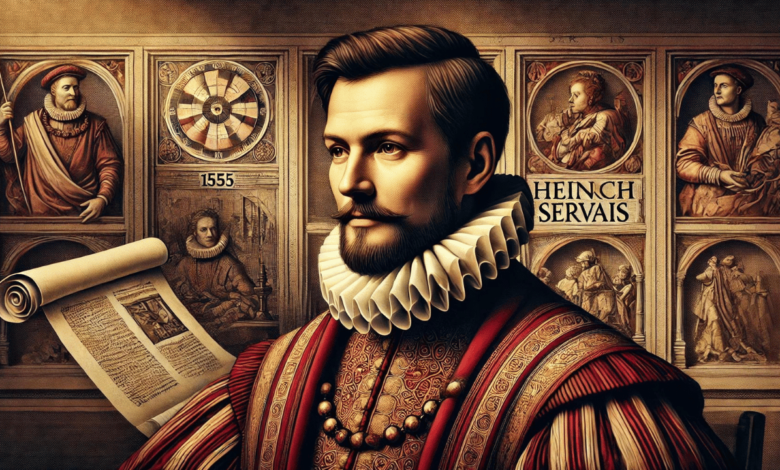Heinrich Servais, a name that resonates through the halls of art history, has captivated audiences with his stunning portrayals and intricate details. Born in 1555, this Flemish Baroque painter carved a niche for himself during an era rich with artistic innovation. His works are not just paintings; they are windows into a world where light dances across canvases and emotions leap to life. With religious themes often at the forefront of his art, Servais invites viewers to explore deeper meanings behind each stroke.
But where can you find some of the best examples of Servais’ masterpieces? Whether you’re a dedicated collector or simply an admirer seeking inspiration, understanding his legacy offers valuable insight into both past and present artistry. Join us as we delve into Servais’ unique style and discover where you can experience the beauty of his work today.
The Influence of the Flemish Baroque on Servais’ Art
Heinrich Servais emerged during a period deeply influenced by the Flemish Baroque movement. This style is characterized by its dramatic use of light and shadow, creating an intense emotional depth in art.
Servais embraced these techniques, skillfully manipulating chiaroscuro to enhance the narrative quality of his paintings. His ability to capture human emotion through expressive faces is a testament to this influence.
Additionally, the attention to detail found in Flemish works inspired Servais’ meticulous approach. Whether depicting fabric textures or intricate backgrounds, he ensured every element served a purpose within the composition.
The vibrant color palette typical of Flemish painters also resonated with Servais. He often utilized rich hues that brought life and vitality to his subjects, making them jump off the canvas.
This blend of tradition and personal expression marks Servais’ unique position within the Baroque context—both respecting history while carving out his own artistic identity.
The Significance of Religious Themes in Servais’ Paintings
Heinrich Servais’ paintings often delve into profound religious themes. This focus reflects the deeply spiritual context of his era, where art served as a vehicle for faith.
His works portray biblical scenes with striking emotional depth. Each figure is carefully crafted to convey devotion and piety. The expressions of the characters invite viewers to reflect on their own beliefs.
Servais masterfully utilizes light and shadow—a technique that enhances the sacred atmosphere in his compositions. These elements draw attention to significant moments, allowing one to feel a connection to the divine.
The rich symbolism present in Servais’ art also plays a crucial role. Objects within the frame often carry deep meanings, inviting interpretation beyond mere visual appreciation.
Through these religious narratives, he immortalizes stories central to Christianity, making them accessible and poignant for all who encounter his work.
Exploring Different Themes and Styles in Servais’ Work
Heinrich Servais’ artistry reveals a remarkable range of themes and styles. His works often reflect the emotional depth characteristic of the Flemish Baroque period. Portraits, such as his renowned 1555 portrait Heinrich Servais, showcase intricate details that bring subjects to life.
Servais also delved into religious narratives. These paintings are imbued with spirituality, inviting viewers to explore deeper meanings. The use of light and shadow adds drama and intensity to these scenes.
In addition to religious motifs, he captured everyday life through still lifes and landscapes. Each piece tells its own story while reflecting cultural nuances from his time.
The vibrancy in color choices further enhances the experience for art lovers. This diversity demonstrates not only Servais’ technical skill but also his ability to connect with various audiences across different themes and styles.
Where to Find Heinrich Servais’ Paintings Today
To explore the captivating works of Heinrich Servais today, art enthusiasts can start by visiting major museums across Europe. Institutions like the Royal Museum of Fine Arts in Belgium house some of his notable pieces.
Online galleries and auction houses also provide access to Servais’ paintings. Websites specializing in Flemish Baroque art frequently feature his work for both viewing and purchase.
Additionally, various academic institutions may hold exhibitions dedicated to artists from this era. Attending these events can offer a deeper understanding of Servais’ style and themes.
Art fairs are another excellent opportunity to encounter original works or reproductions. Engaging with local galleries that focus on historical painters could lead you to hidden gems as well.
Don’t forget about virtual tours. Many museums now provide online access, making it easier than ever to appreciate Servais’ artistry from anywhere in the world.
Read This: A Comprehensive Guide to the Sean Viator Obituary in Baton Rouge
The Impact of Servais’ Legacy on the Art World
Heinrich Servais has left an indelible mark on the art world. His unique style captivated audiences and inspired countless artists who followed in his footsteps.
His ability to blend traditional techniques with innovative themes shifted perspectives among contemporaries and future generations. Artists began to explore religious subjects with a new lens, enhancing emotional depth in their works.
Servais’ influence extended beyond just technique; it ignited discussions about the role of art in society during tumultuous times. He encouraged a deeper connection between spirituality and artistic expression, prompting others to delve into personal narratives through painting.
Today, many scholars study his contributions to better understand the evolution of Flemish Baroque art. Museums often showcase his pieces as prime examples of this rich tradition.
The continuing interest in Servais speaks volumes about his lasting legacy within both academic circles and popular culture alike.
Conclusion
Heinrich Servais’ artistry offers a remarkable glimpse into the vibrant world of Flemish Baroque painting. His unique ability to blend religious themes with intricate details has left an indelible mark on art history. The emotional depth and technical skill present in his works, such as the captivating 1555 portrait Heinrich Servais, showcase not only his talent but also the cultural context of his time.
From grand altarpieces to intimate portraits, each piece invites viewers to explore deeper narratives and connections. Those who seek out paintings by Servais are rewarded not just with beauty but also with insight into human experience through art.
As we appreciate the legacy of Heinrich Servais, it becomes clear that his contributions continue to resonate within today’s artistic landscape. His work encourages us to look closer at both technique and emotion—a testament to the power of visual storytelling that remains timeless.



